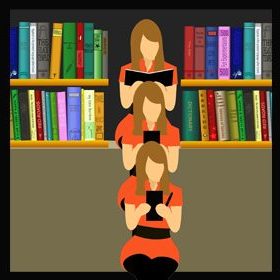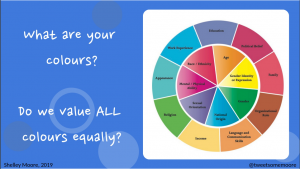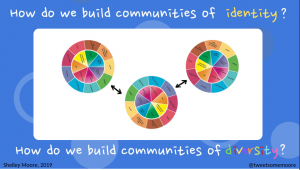In the pedagogy of multiliteracies, There is an explanation of post-Fordism or fast capitalism that assumes that workplaces are flattening the hierarchy. I can see how in the early to mid-’90s that would have appeared as the case, as the optimism of technological literacies was burgeoning in the industrial world. I do, however, think that this did not really manifest itself as postulated, rather than flattening hierarchy in workplaces, it only served to expand the gap of “unskilled” work like in the case of Amazon. Technology is ever-present, but it is used to control unskilled labour, reporting on speed and accuracy of repetitive work, rather than promoting vision, mission or corporate values.
“We know from every other algorithmic audit of these kinds of systems that there are people for whom this kind of tracking and evaluation performs more poorly, and they are the populations already most likely to be surveilled at work and in their communities,” she wrote over Twitter direct message. “Will the motions of employees of colour, of older employees, employees with disabilities be more likely to be misread or determined to be substandard or inefficient, and threaten their employment?”(Morse, 2020)
This serves to support the later assertion that there are two ways to engage workplace discourse “ as opening new educational and social possibilities, or as new systems of mind control or exploitation.”
Civic pluralism as a filler for monocultural nationalism is reaching a fever pitch in western society especially in the USA where the black lives matter movement is publicizing the places in society where wealth, power, symbolism, and dialect are identity markers that determine social class (The New London Group, 1996).
I am forced to evaluate a current situation in my district, like many other districts, where antiracist teachings are coming under fire from senior management in that the mere discussion of historical/current implicit and explicit biases used to discriminate on the basis of race is being grossly misused as a means to evaluate the teaching practices of individual teachers. There is a totalitarian promise of discipline and dismissal. Cohesive society and new civility as a productive resource are being quashed as assimilation in how race literacy is explored is mandated. This is in direct opposition to actively recognizing differences and negotiating them in a way that compliments each other, limiting cultural and linguistic repertoires censoring access to a broader range of cultural and institutional resources (The New London Group, 1996).
As the London group states ending “the public” is essential to making subculture accessible, however, this leads to invasion of private spaces as Kevin Kelly postulated in 2008 we would be willing to give up privacy in order to allow, specifically the Internet, access to total transparency to facilitate convenience of knowledge acquisition and tools or as the London group defines it conversationalization of public language(see Youtube video) (Kelly,2008).
The changing realities outlined by the London group
(The New London Group, 1996)
This demonstrates an evolution of literacies and parallels the continuum discussed by Dobson and Wilinsky in Digital Literacies. I would argue that this evolution has not yet completed the transition outline above but rather as Dobson and Wilinsky outline continues to have one foot in the traditional while shifting to the new reality.
The diagram, presented in the London group paper, to create a grammar of modes for people to use in my mind overlaps with the diagrams being used to explain Inclusion by Shelley Moore.
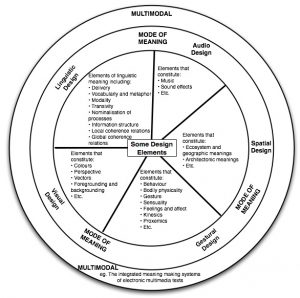
Which in turn mimics the medicine wheel approach to education created by Dr. Martin Brokenleg.
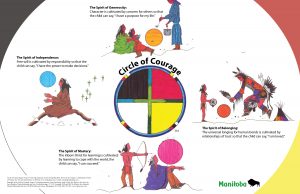
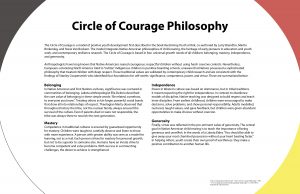
This overlap inspired my reinterpretation of Task 1 changing its semiotic modality. I originally approached this task as an audiovisual task rather than a written task. I went back to reimagine how the instructions could adhere to a multimodal approach to completion while honouring inclusion and cultural diversity. This is a process I have been engaging in with my own lesson planning this year so the idea of what I know to be universal design sprang to mind.
The original task’s goal was an introduction of self, through the lens of what you carry around in your bag. What does this say about you and how that compares to your view of self while paying attention to text, technology and history.
In order to reimagine this task while still accomplishing the same goal. I would rephrase the task to include oral tradition and multimodal interpretation.
Tell me a story about you. Using objects that you interact with daily, tell me about where you belong, how you are independent, where you are generous or experience generosity and what you have mastered with those objects. Pay attention to how you see those objects contributing to your identity of self and identity of public self. What texts and technologies (see this week’s readings) within your artifacts contribute to your inward and outward self. You may demonstrate this understanding however you see fit ex: blog post, graphic, video, audio recording etc…
Here is a checklist of items you should include (This part is particularly important for learners who need structured and chunked criteria. It is an aspect of inclusion that harms no one and could help everyone. I am making this part up as I wasn’t entirely sure what was the full criteria of the assignment.)

A written example is provided for you. Please feel free to use a reader for audio of the example, or listen to the audio file attached (this is where Dr. Dobson’s example would be. I do think that audio files or at the very least texts that allow for the use of a screen reader are essential… * some of our readings do not allow for the use of a screen reader for example this week’s “A Pedagogy of Multiliteracies” is formatted such that you only hear the footnote text as shown in the video clip)
Here is my reinterpreted Task 1 “What’s in your bag” I filmed this as a meta exercise showing how I film using all of my pieces of text and technology.
References
Brokenleg, M. Circle of Courage. Mantiboa Education. Government of Manitoba. https://www.edu.gov.mb.ca/k12/cur/cardev/gr9_found/courage_poster.pdf.
Moore, S. (2019, January 2). Presentation slide from What is Inclusion? [web log]. https://blogsomemoore.files.wordpress.com/2019/11/pembina-trails.pdf
Morse, J. (2020, December 2). Amazon announces new employee tracking tech, and customers are lining up. Mashable. https://mashable.com/article/amazon-aws-panorama-worker-customer-tracking-technology-smart-cameras/.
The New London Group. (1996). A Pedagogy of Multiliteracies: Designing Social Futures. Harvard Educational Review, 66(1), 60–93. https://doi.org/10.17763/haer.66.1.17370n67v22j160u
TED. (2008). Kevin Kelly: The next 5,000 days of the web. https://www.youtube.com/watch?v=yDYCf4ONh5M.
